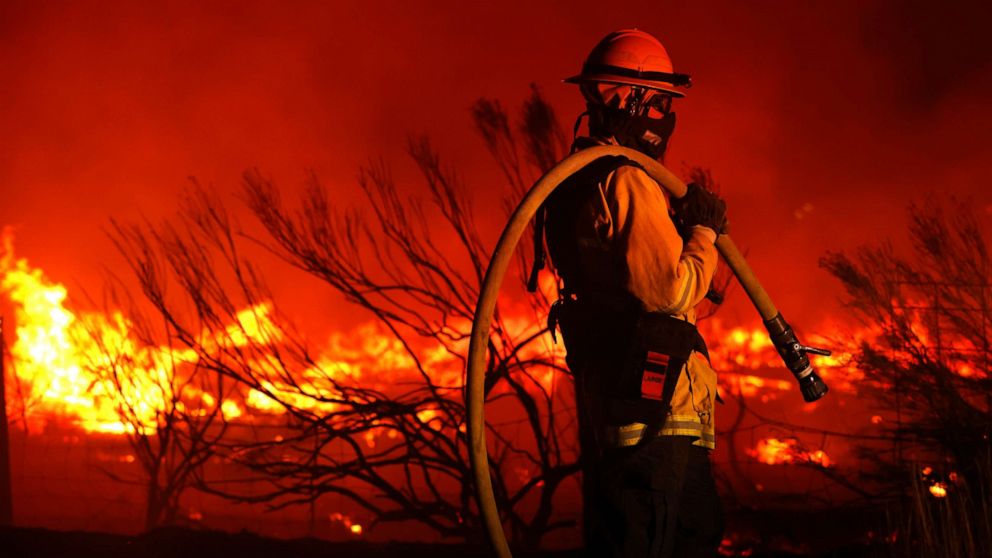Worsening California blazes prompt new calls for innovations to fight fires smarter

As wildfires in California and beyond have grown larger and deadlier in recent years, some in the firefighting sector say the tools and technologies used to combat new blazes have not kept up with the impact of climate change's fury.
"In many cases, we're still fighting fire with sharpened pieces of metal attached to the ends of sticks," Bill Gabbert, who worked as a full-time firefighter for more than 30 years before becoming managing editor of the industry publication Wildfire Today, told ABC News. "Hand crews, using hand tools and chainsaws to remove the fuel on the edge of a fire so the fire burns up to that area where there is no fuel and then it stops spreading, that's how we put out fires."
Some major technological leaps, including computer modeling simulators have been made to help assist firefighters, but funding and bureaucratic hurdles in many cases have prevented their widespread adoption in communities that may need them. Meanwhile, a handful of entrepreneurs see the blank space as a ripe opportunity for new innovations they say can ultimately help save lives as the West now grapples with some of its largest fires ever recorded.
The Dixie Fire currently terrorizing Northern California has ballooned into the second-largest fire in the state’s history, scorching a whopping 917,579 acres. As of Tuesday, it is 59% contained. Just south of this inferno, the Caldor Fire also still rages and has consumed some 216,646 acres. The California Department of Forestry and Fire Protection, known as Cal Fire, reported it at 49% contained on Tuesday.
During the 1990s, the average annual acreage burned by wildfires in the U.S. was 3.3 million acres. Since 2000, that annual average has more than doubled to 7 million acres, according to an August report prepared for Congress. In 2020, wildfires burned some 10.1 million acres -- the second-most acreage impacted in a year since record-keeping began in 1960.
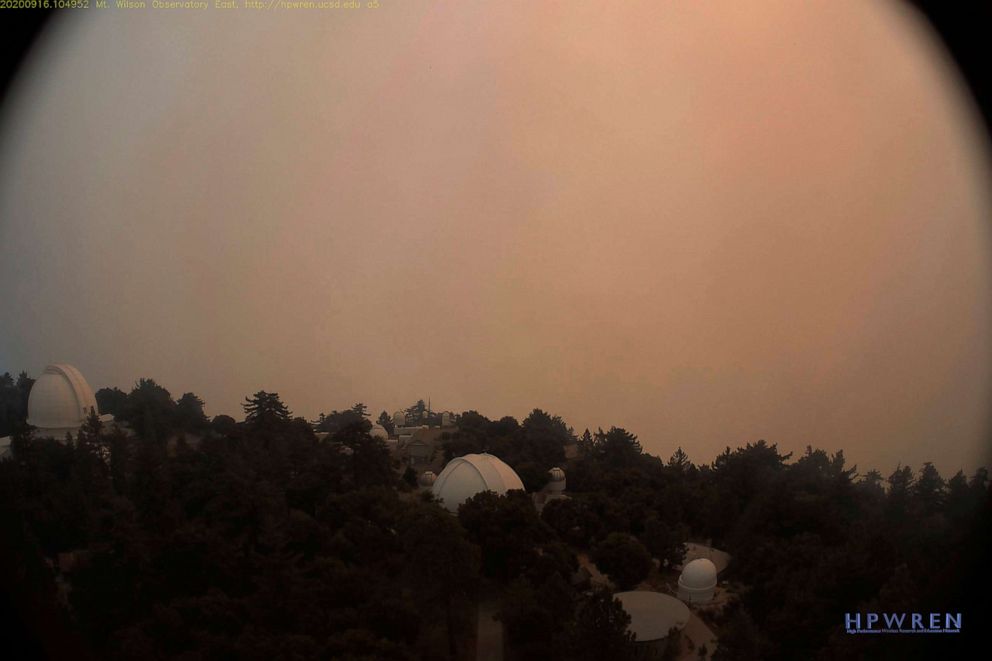
As mounting data emerging from drought-stricken California points to looming crises, here is how firefighters are implementing technology to battle blazes and what some experts say still needs to be done.
Simulations, drones and remote cameras: What's out there now
Jon Heggie, a battalion chief at Cal Fire, told ABC News that many fire agencies in recent years have explored emerging technologies as a way to address issues that arise in firefighting, noting how Gov. Gavin Newsom of California put out a call for "innovative ideas" to create "cutting-edge firefighting technology" in fall 2019.
One of the results of this effort -- and "really, the one that stands out," according to Heggie -- was the creation and adoption of a computer modeling service that predicts a fire's spread developed by the Bellevue, Washington-based firm Technosylva.
The software integrates weather, topography, fuel (combustable material) and more to "give us a real-time estimation of fire growth over a given period of time," Heggie said.
"Anytime there is a fire started anywhere in California, a simulation is started so that the field commanders have that real-time information from the minute a fire starts," he added. "It populates that fire based on where the fire was reported, that may not be accurate of where the fire actually is, so when the first arriving engines get on scene, they give a more updated report of location and then another report is generated and that will be more accurate."
The data is critical for giving early evacuation notifications to communities that could be in the path of the fire, as well as for decision-making on how to best combat a blaze.
"It allows us to better utilize our resources and be more efficient and effective with our choice of resources and where we use them," Heggie said. "Not only that, but it allows us to use our ground and our air assets more effectively by understanding where are the values at risk, where the population base is, and really has saved lives."
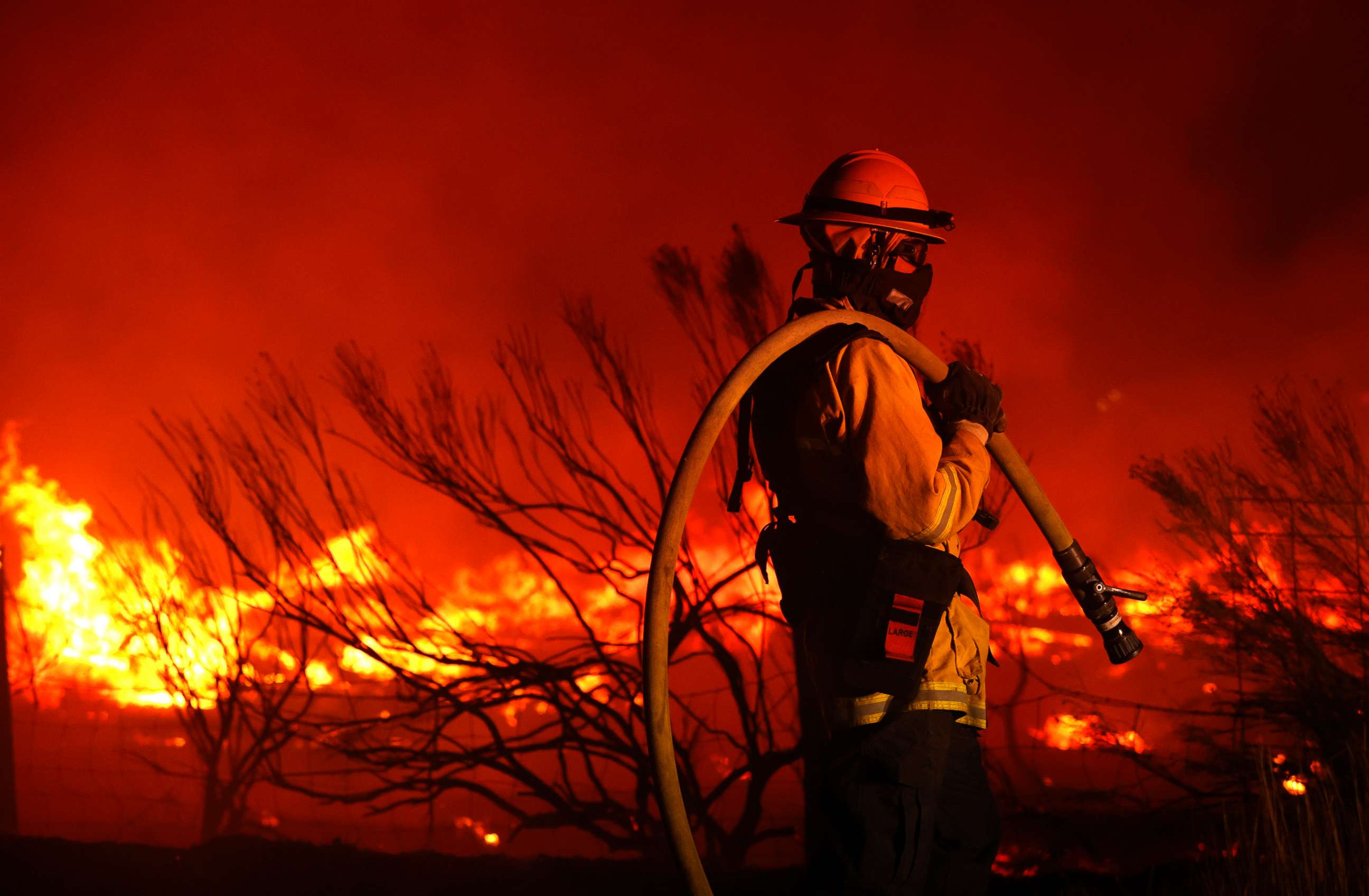
Heggie said the agency in recent years has also embraced drones for intelligence-gathering to better map and fight fires effectively, especially in remote areas where larger aircraft may face difficulties. About 30 pilots at Cal Fire are trained to a basic level in operating drones, he said, and 10 are trained to a more-advanced interagency level. The drones can help find hotspots using infrared technology and heat sensors, Heggie said, especially in dense forest areas.
Hundreds of high-tech cameras have also been posted in remote, fire-prone areas in the West to help discover fire ignition and monitor fire behavior by ALERTWildfire, a consortium backed by three universities that has received both public and private funding. Some cameras are also equipped with artificial intelligence technology to detect smoke, and the public can even be on the lookout for a potential fire via feeds from the group's website.
These advancements have updated the way agencies respond to fires by leaps and bounds, but Heggie said that fire-fighting technology is an area where more resources could be invested as wildfires have evolved.
"What we've seen in the last few years is a real change in the way fires have grown and what we have to do is we have to take a global perspective, look at that and change how we fight them and integration of technology is one way of doing that," he said. "We're always looking for new and innovative ways to fight fire and whatever can do things faster, more efficiently and more safely -- that's really what our goal is."
Issues of implementation
While a slew of new technology exists, some say its implementation and adoption at fire departments across the country is lagging behind.
"The technology used to contain fire spread is more or less the same as it's been for about 100 years," Timothy Ingalsbee, the executive director of Firefighters United for Safety, Ethics, and Ecology, told ABC News, saying that "hand crews with hand tools" still remains the go-to method to contain fires.
Ingalsbee, however, added that millions of dollars have been invested in "an array of technologies that really enhanced our ability to map and monitor and model fire's spread."
"The technology for monitoring mapping and modeling wildfires is like a technological renaissance," he added. "What we have as a problem is under-utilization of all this investment in technology for fire management."
Ingalsbee said part of this is due to the culture and loose organization of agencies, many of which are crewed by volunteers (volunteer firefighters account for the largest share of firefighters nationwide, according to the National Fire Protection Association). Costs, limited staffing and "bureaucratic inertia" also impedes the widespread adoption of new technology, he added.
"What needs to really happen is to get more of this technology into the hands of local communities," he said. "I think it's going to make people feel more informed and less prone to panic."
The technology can also be used to help "manage wildfires," Ingalsbee said, and change the way people view fires. This can help redirect resources to vulnerable communities and better control where wildfires burn.
"We still are in this kind of war-on-wildfires paradigm, still seeing fire as an enemy to attack, extinguish or eliminate," he said. "And this technology really has the ability to shift our paradigm, so we see fire more as I dare say ally, or at least a tool, for managing ecosystems in ways that really better protect communities and also sustain the ecosystem services that we all rely on."
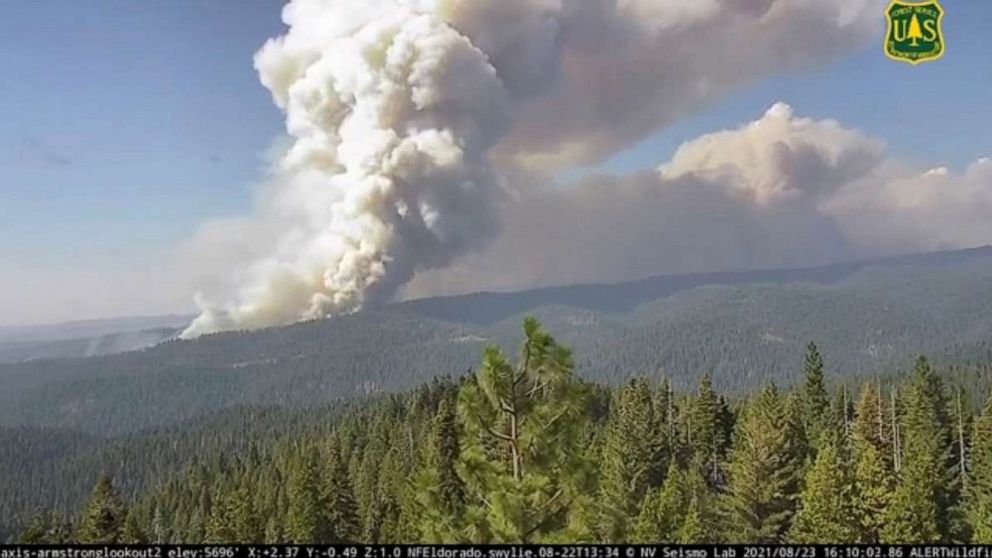
Wildfire Today's Gabbert echoed Ingalsbee's sentiments about adoption of tech, telling ABC News that "the technology exists, it just has not been implemented."
Mapping and tracking technology could save lives, he argued, but "has not been transferred widely to people on the ground who need it."
Gabbert largely blames this on a lack of funding, saying the budget for federal firefighters hasn't significantly increased despite evolving needs.
"With the fires getting bigger, we need to spend more money in order to put them out," he said.
Room for innovation
Mike Ralston told ABC News that it was during his 15-year career as a firefighter that he was inspired to come up with ways to battle blazes more effectively using technology.
"In the fire space, there's a lot of brave men and women doing a lot of really critical roles, but the tools that we use are basically the same tools have been used for the past 50 or 100 years," he told ABC News. "They really haven't seen the same level of progress and innovation that you've seen in most of the other tools that we use in our day-to-day lives."
While looking for ways to improve technology, Ralston connected with Sam Cossman, the chief executive and co-founder of the San Francisco-based startup Qwake Technologies.
Ralston is now the chief operating officer at Qwake, which is working on developing new technology specifically catered toward firefighting. Its C-THRU device is aimed at revolutionizing how firefighters communicate, transmit data and ultimately save lives.
The device is worn as a helmet and features augmented reality technology and a thermal camera to help with visibility in smoky or dark conditions. The display also adds lines around door frames and more to help a firefighter assess their surroundings in high-stress environments, and share this data with their colleagues.
As a former firefighter, Ralston lamented the market conditions that he said don't incentivize technology firms to innovate or invest in research in the public safety sector.
"The impetus isn't there for these companies to do it, and that's always rubbed me the wrong way and that was one of the things that that drove our company, saying, 'You know what, instead of worrying about how many dollars can be made doing this, let's take this tech that we know we can produce and get it into the hands of the firefighters to actually make an impact, make a difference in performance of what firefighters do,'" he said.
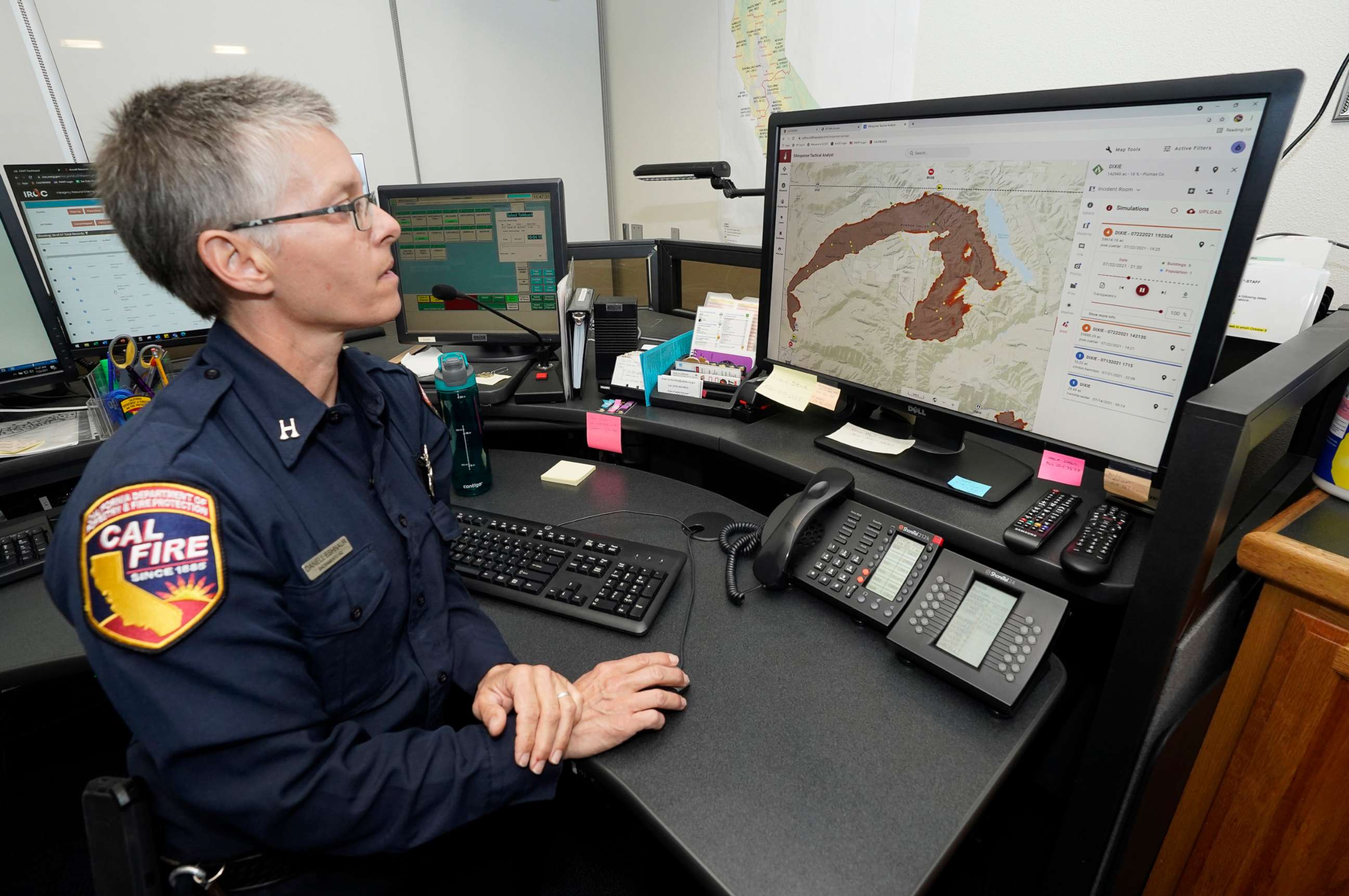
Attitudes are changing as agencies are forced to do more with less, Ralston said, and as fires in recent years have grown larger. Qwake Technologies recently received a grant from the Department of Homeland Security to speed up the development and production of C-THRU, which is currently in the prototype stages.
"We've got this 9/11 memorial coming up, and we realize that this is really a 20-year journey that the public safety domain has come to reckon with, saying we actually need technology," he said. "We really need to do more with less right now, that's what's been driving this change in the industries is -- we've got budgets being cut, we've got things like global warming and structures are being built closer and closer to wildland areas, fires are getting bigger."
"Technology has always been a tool that humans have used to do more with less," he said.
